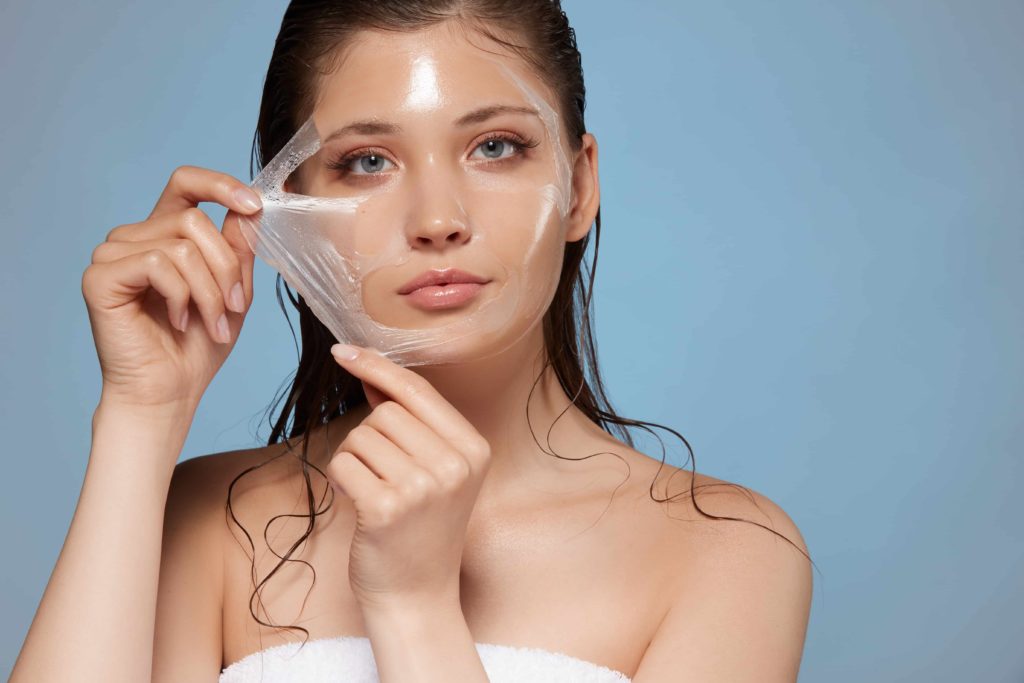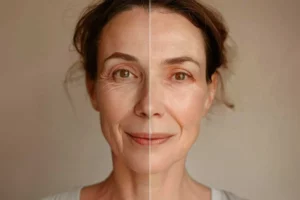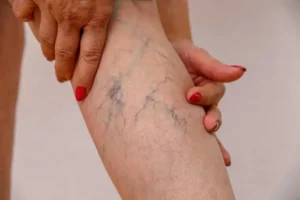If you’re looking for a way to refresh your skin and improve its texture and tone, chemical peels might be your solution. Chemical peels can help reduce the appearance of fine lines, wrinkles, acne scars, and sun damage, among other skin concerns. However, knowing which one is right for you can be overwhelming with so many chemical peels available.
There are three main types of chemical peel procedures: superficial, medium depth, and deep peels. Choosing which type is right for you will depend on your skin’s condition and how much time you want to devote to the treatment process. Here’s everything you need to know!
What are chemical peels?
Chemical peels have become a popular skincare treatment for those looking to improve their skin’s texture, tone, and overall appearance. The treatment involves applying a chemical solution to the skin, which causes the top layer to peel off, revealing fresh, new skin underneath. Chemical peels have various strengths and formulas, making them practical for multiple skin types and concerns.
The benefits of chemical peels are numerous. They can improve skin texture, reduce the appearance of fine lines and wrinkles, fade hyperpigmentation and acne scars, unclog pores, and give skin a brighter, more youthful appearance. However, choosing the right type of chemical peel for your skin type is essential, as using the wrong type can result in adverse reactions and damage to the skin.
Superficial Peels
Superficial peels, also known as light peels or lunchtime peels, are the mildest form of chemical peels available. They are typically made up of alpha-hydroxy acids (AHAs) or beta-hydroxy acids (BHAs) and work to exfoliate only the top layer of skin, also known as the epidermis. This gentle exfoliation helps to unclog pores, improve skin texture, and give the skin a brighter appearance.
The benefits of superficial peels are numerous. They can help reduce the appearance of fine lines and wrinkles, fade minor discoloration, and improve skin texture and tone. Additionally, they can help control acne and prevent future breakouts by unclogging pores and removing dead skin cells that can lead to blemishes.
Who should use superficial peels?
Superficial peels are suitable for most skin types, including sensitive ones. However, it’s important to note that they may not be as effective for those with more severe skin concerns, such as deep wrinkles or hyperpigmentation.
Medium Peels
Medium peels, or TCA (trichloroacetic acid), are more potent than superficial peels and penetrate deeper into the skin. They are typically made up of a combination of acids, including TCA, which exfoliates the outer and middle layers of skin, also known as the epidermis and dermis. This deeper exfoliation can help reduce the appearance of more significant skin concerns, such as deeper wrinkles, acne scarring, and hyperpigmentation.
The benefits of medium peels are similar to those of superficial peels but are more significant. They can help reduce the appearance of deeper wrinkles and fine lines, improve skin texture and tone, and fade moderate hyperpigmentation and acne scarring. Additionally, they can help stimulate collagen production, resulting in firmer, more youthful-looking skin.
Who should use medium peels?
Medium peels are suitable for most skin types but may not be recommended for those with dark skin tones or a history of keloid scarring. It’s also important to note that medium peels can cause more significant side effects, such as redness, swelling, and peeling, so it’s important to follow aftercare instructions carefully. Consulting with a skincare professional before undergoing a medium peel is recommended.
Deep Peels
Deep or phenol peels are the most potent and aggressive chemical peels. They penetrate deep into the skin, targeting the lower layers of the dermis, and can cause a significant amount of peeling and downtime. Deep peels use phenol acid, a powerful exfoliant that can effectively remove damaged skin cells and promote collagen production.
The benefits of deep peels are significant and can address more severe skin concerns. They can help reduce the appearance of deep wrinkles, fine lines, and sun damage, as well as significantly improve the texture and tone of the skin. Additionally, they can help address pigmentation issues and even out skin tone.
Who should use deep peels?
Deep peels are recommended for those with more severe skin concerns and are unsuitable for everyone. They are typically not recommended for those with darker skin tones, as they can cause hypopigmentation or skin lightening. Deep peels can also cause significant discomfort during and after the treatment and require a longer recovery than other peels.
What are the factors to consider when choosing a chemical peel?
Choosing the right chemical peel for your skin type is crucial to ensure you get the best results while minimizing the risk of adverse reactions. Before getting a chemical peel, it’s essential to consider several factors, including your skin type, sensitivity level, and the specific skin concern you want to address.
When choosing a chemical peel, it’s essential to consider your skin type. Superficial peels are generally safe for all skin types, including those with sensitive skin. Medium peels can be effective for those with mild to moderate skin concerns but may not be recommended for those with darker skin tones or sensitive skin. Deep peels are the most aggressive and are typically reserved for those with severe skin concerns and fair skin types.
Another factor to consider is your sensitivity level. Choosing a gentle peel that won’t cause irritation or redness is essential for sensitive skin. Salicylic acid, glycolic acid, and lactic acid peels are soft options that can effectively exfoliate the skin without causing significant irritation.
What are the side effects of chemical peels?
Possible side effects of chemical peels include redness, swelling, and peeling. These side effects are expected and typically subside within a few days to a week after the treatment. However, suppose you have a history of adverse reactions or sensitive skin. In that case, you must consult a skincare professional at SKYNN MD to determine if a chemical peel is suitable.
Learn your chemical peels to get the best results for your skin type.
Chemical peels can effectively improve your skin’s texture, tone, and overall appearance. Whether you’re looking to reduce fine lines and wrinkles, address pigmentation issues, or rejuvenate your skin, a chemical peel can help. By considering your skin type, sensitivity level, and specific skin concerns, you can choose the right chemical peel for you and achieve your desired results.
At SKYNN MD, we offer a range of chemical peels that can help address various skin concerns. If you want to try a chemical peel or learn more about our skincare services, please don’t hesitate to contact us. We’re here to help you look and feel your best, and we can’t wait to help you achieve your skincare goals!











